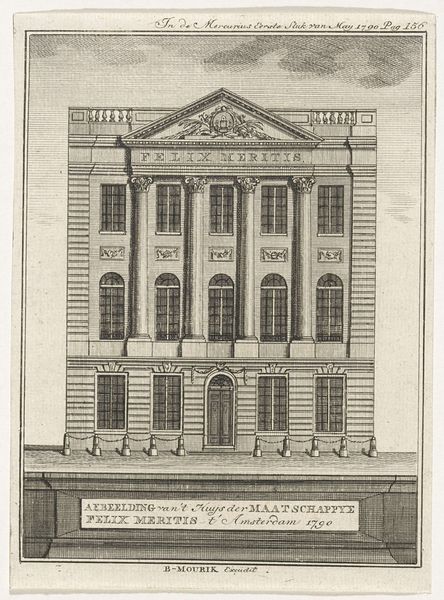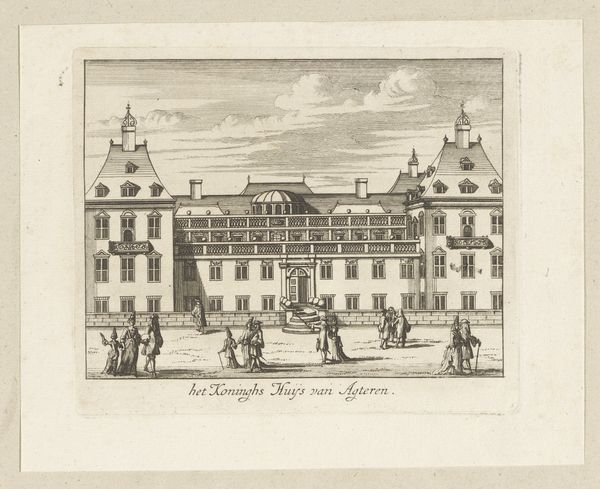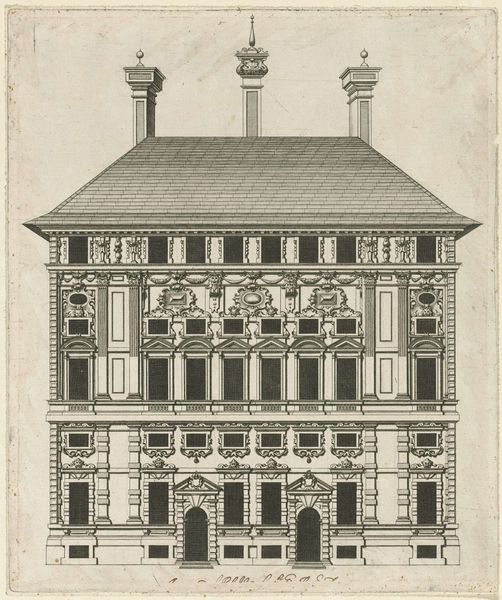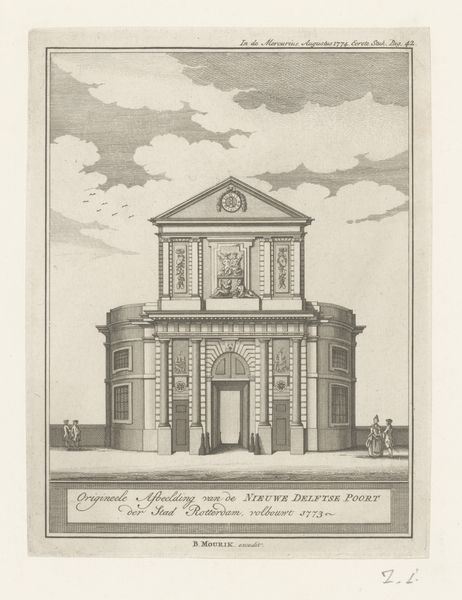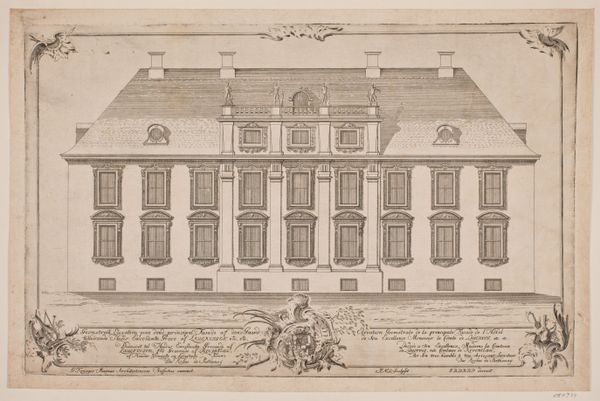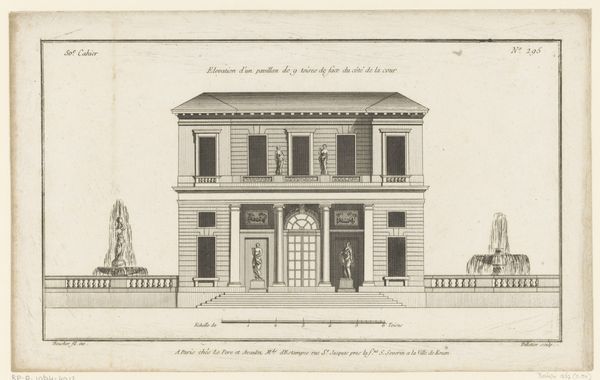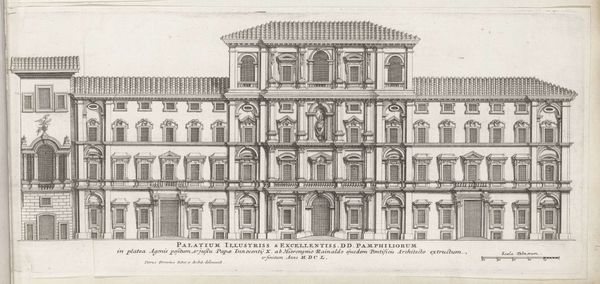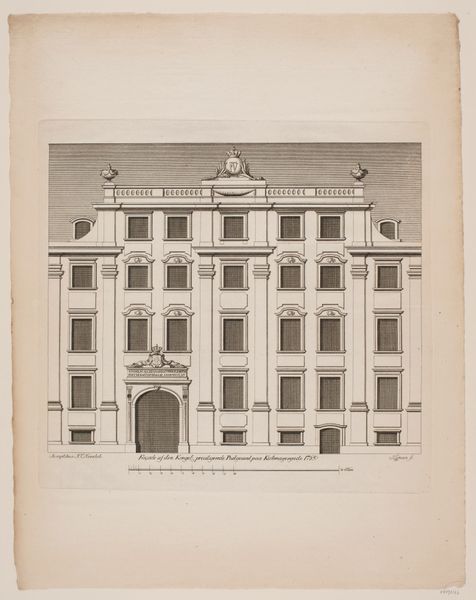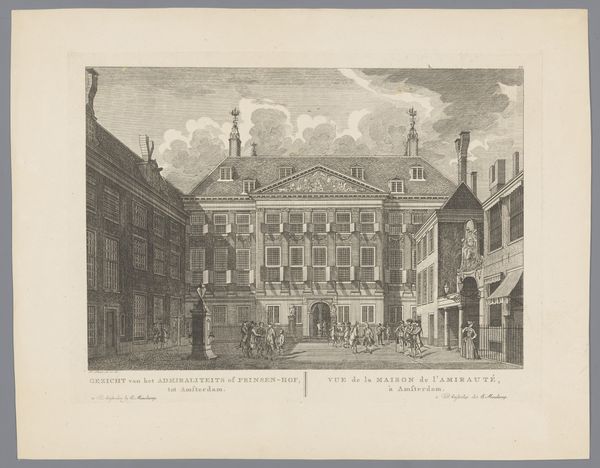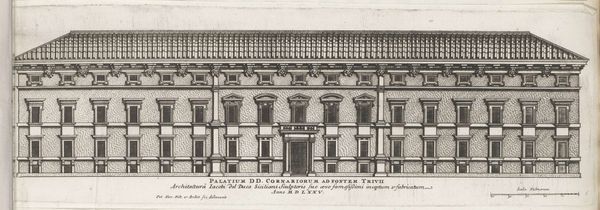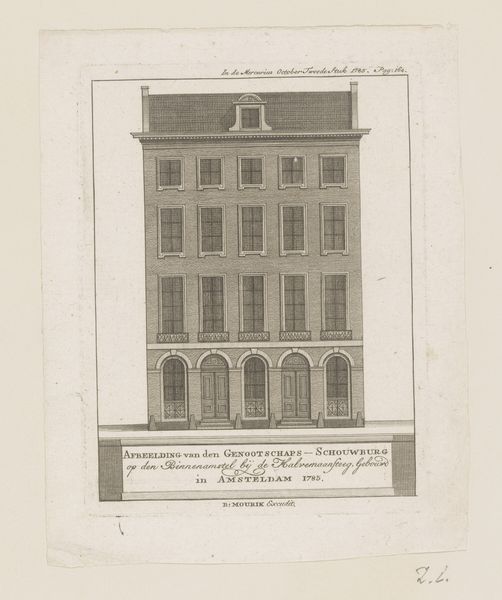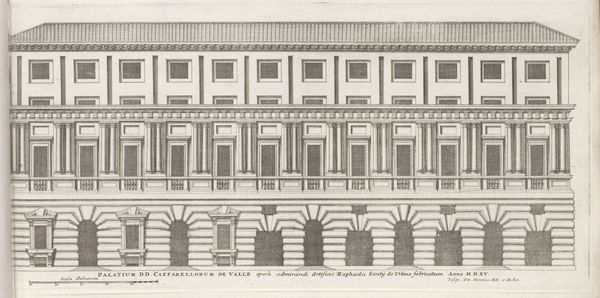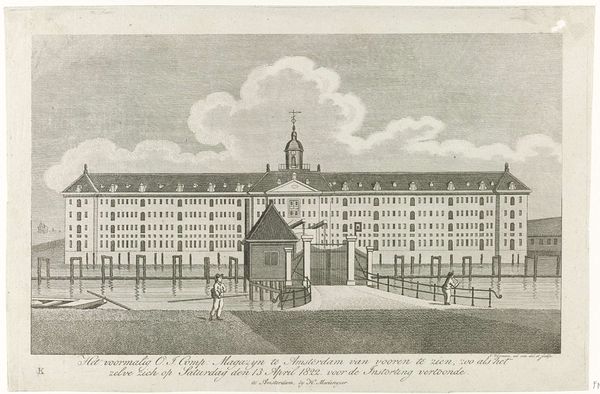
Nieuwe voorgevel van het Lutherse Diaconie Weeshuis te Amsterdam, 1784 1784
0:00
0:00
drawing, paper, engraving, architecture
#
drawing
#
neoclacissism
#
paper
#
geometric
#
cityscape
#
engraving
#
architecture
Dimensions: height 176 mm, width 137 mm
Copyright: Rijks Museum: Open Domain
Editor: This is an engraving titled "Nieuwe voorgevel van het Lutherse Diaconie Weeshuis te Amsterdam, 1784," or "New Facade of the Lutheran Deaconry Orphanage in Amsterdam, 1784." It’s an anonymous work, rendered in 1784, and appears to be on paper. The geometric facade has a rather imposing quality, despite the relatively small scale of the image. What stands out to you when you look at this print? Curator: Indeed, the geometric exactitude arrests the eye. Note the precision with which each window is rendered, the unflinching symmetry employed in the façade's design. The very absence of artistic 'personality' contributes to its formidable, almost clinical presence. Do you perceive any visual deviations within this rigorous structure, or is it perfection made manifest? Editor: I see how incredibly symmetrical the overall facade and window placements are. But I notice there's slightly more detail in the doorway ornamentation compared to the rest of the building. Would you consider this to be a disruption, and does this indicate anything of substance, if any? Curator: Precisely! That subtle emphasis disrupts the absolute uniformity, introducing a point of hierarchical significance. It suggests a coded language where architectural details become signifiers of importance. We must, however, remain objective: such variance is perhaps unavoidable. What is of interest is how little deviation exists. The material presentation is intended to provide information about its structural elements in its purest forms, almost platonic. Editor: I hadn't thought about it that way before! I'm realizing that what appears straightforward can hold subtle nuances of significance in material details and composition. Curator: Absolutely, observing form and its construction leads us to new discoveries. A valuable approach for appreciating works like this one.
Comments
No comments
Be the first to comment and join the conversation on the ultimate creative platform.
